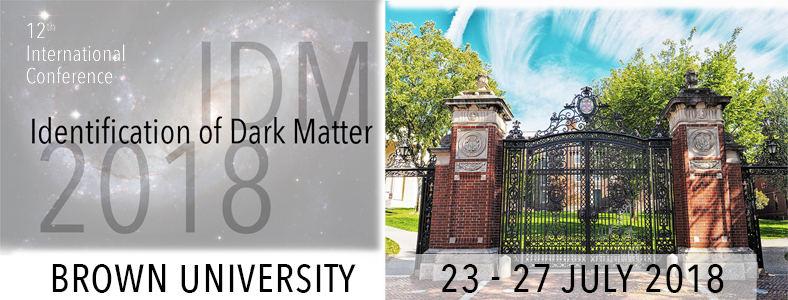Conveners
2.3 Direct Detection
- Richard Schnee (South Dakota School of Mines & Technology)
After the successful conclusion of the PICO 60 experiment, the new "right-side-up", or inverted bubble chamber, PICO 40L, will start operation later in 2018. We will present the current status and the experimental plans for PICO 40L.
The PICO collaboration is also in the design and early procurement phase for the PICO 500 experiment, a tonne scale dark matter bubble chamber that aims to...
The DarkSide-50 detector aims to directly detect WIMPs using a liquid argon time-projection chamber.
Understanding the energy scale for WIMP interactions is important since it directly maps to a quantitative understanding of WIMP sensitivity.
A combined energy variable is developed where anti-correlation between ionization and scintillation produced by an interaction in liquid argon is taken...
The DARWIN (DARk matter WIMP search with liquid xenoN) experiment will be the next-to-next generation direct search dark matter detector. Featuring a 40 t target mass liquid xenon time projection chamber it will reach a sensitivity to WIMP nuclear recoil cross-sections at the level of the "ultimate" irreducible background induced by coherent scattering of solar and atmospheric neutrinos. Hence...
The SuperCDMS collaboration has designed a new generation of semiconductor-based dark matter detectors with sensitivity to single charge carriers and very low dark count rates. The achieved threshold of less than half of an electron-hole pair enables the detection of events with energy deposits as little as 1.2 eV (0.7 eV), the indirect bandgap energy of Si (Ge). This threshold was reached...
Dual-phase xenon time projection chambers have been recently suggested to be sensitive to sub-GeV dark matter if the inelastic channels of Bremsstrahlung and the Migdal effect in the nuclear interaction are taken into account. Sub-GeV dark matter is difficult to probe due to the small energy transfer in dark matter-nucleus elastic scattering and the finite energy threshold of the detector....
The XENON1T collaboration has completed a search for Weakly Interacting Massive Particles using a total of $1$ tonne-year of exposure. This talk will detail the analysis performed of the combined XENON1T dataset dearching for spin-independent scatters in a fiducial mass of $1.3$ tonnes.
One of the primary goals of many direct dark matter (DM) experiments have been focused on detecting weakly interacting massive particles (WIMPs). Usually, these searches assume a point-like contact interaction between DM and nucleons. However, it is possible that they interact with the exchange of a light mediator with masses comparable to the momentum transfer of the process involved, in...
